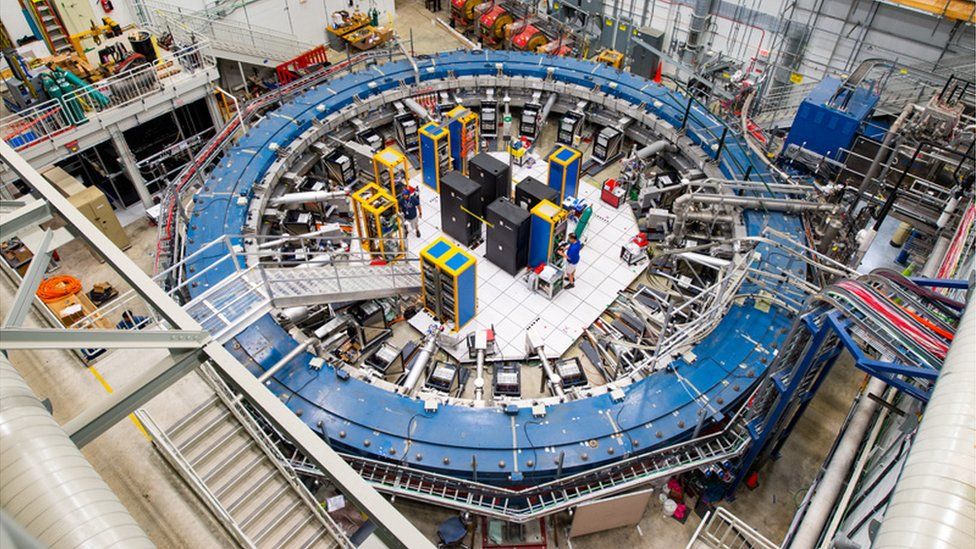The intriguing hypothesis that a fifth force of nature might exist has gained support due to an unexpected wobble of a subatomic particle, according to researchers.
There are four fundamental forces in existence according to current knowledge, and the standard model of particle physics can describe three of them: the electromagnetic force, and the strong and weak nuclear forces. However, the model is unable to account for gravity or dark matter, thought to constitute around 27% of the universe, which is a bizarre and mysterious element. According to academics, there might be yet another fundamental force of nature.
“We are discussing the concept of a fifth force, as the observed actions [in these experiments] cannot always be clarified by the four recognized forces,” comments Dr. Mitesh Patel from Imperial College London. The information comes from research at the US particle accelerator facility Fermilab, which examined how muons, subatomic particles identical to electrons but 200 times heavier, move in a magnetic field. Patel explains that muons rotate around the magnetic field’s axis, similar to a child’s spinning top. The typical model can forecast how often that motion wobbles. However, the outcomes of the FermiLab experiments do not seem to support such hypotheses.

The Atlas experiment at the Large Hadron Collider (LHC) at Cern is led by Prof Jon Butterworth of University College London. He asserts that the oscillations are connected to how the muon engages with a magnetic field. In the standard model, they can be estimated very precisely, but doing so requires using quantum loops containing well-known particles. The appearance of an unidentified particle in the loops, such as the carrier of a fifth force, could be indicated if the results don’t match the forecast.” The results confirm earlier research from FermiLab that produced equivalent outcomes.
However, Patel notes that there was a “fly in the ointment,” observing more uncertainty surrounding the theoretical forecast of the frequency between the initial results and the new data. He claims that this might change the scenario, and what they are observing could align with the so-called standard model. Butterworth adds, “If the discrepancy is confirmed, we will be convinced there is something fresh and intriguing, but we won’t be certain exactly what it is.” Ideally, the disparity would provide new theoretical insights leading to new predictions, like how to locate the particle carrying the new force if that’s indeed the case. Constructing an experiment to specifically find that particle would then provide definitive confirmation.

The LHC has also yielded intriguing results through a different kind of experiment examining the rate at which muons and electrons form as specific particles decay. These results, akin to those from the Fermilab experiments, suggest the potential existence of a fifth force. Patel, who contributed to the LHC experiments, states that the results are now less consistent, possibly because they are measuring various things.
According to Butterworth, one of the longest-standing and most important differences between a measurement and the standard model is the unexpected frequency of the muons’ wobbles. He asserts, “The measurement is a remarkable achievement and highly unlikely to be incorrect now. Therefore, if the theory predictions are resolved, this might truly be the first piece of evidence for a fifth force—or anything else unexpected and beyond the realm of the standard model.”
- Misleading Video Alters Prime Minister Shehbaz’s Speech Targeting Political Rival, Not His Party - 21/04/2024
- ATC Grants Three-Day Remand for Suspects in Ichhra Bazaar Harassment Case - 19/03/2024
- Pakistan, India, and Bangladesh Lead World in Severe Smog Crisis, Exceeding WHO Guidelines - 19/03/2024


